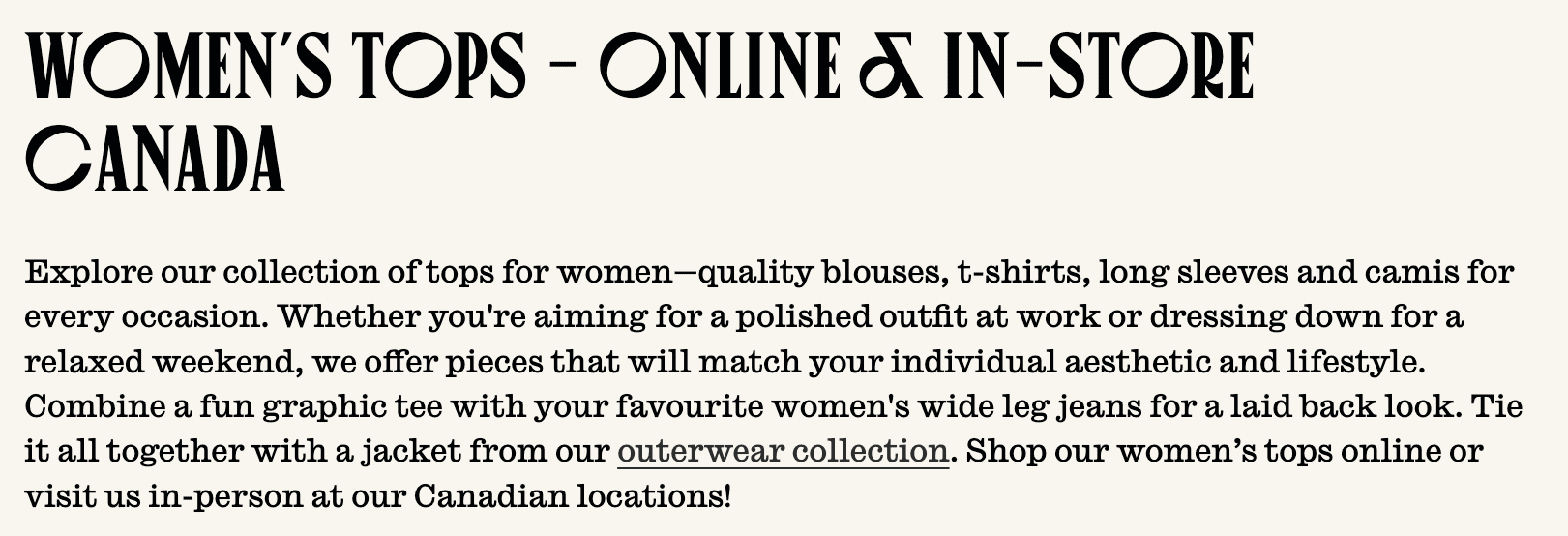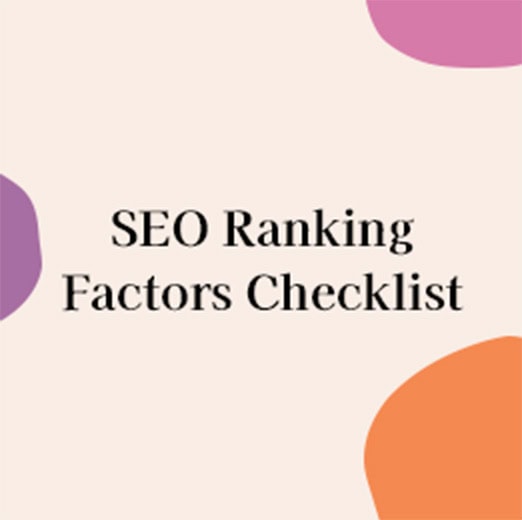Product Page SEO: How to Turn E-commerce Traffic into Sales with Smarter Content
If your product pages only offer the basics—size, color, price—you’re missing a huge opportunity. Product page SEO is more than just inserting keywords; it’s about creating compelling, conversion-ready content that attracts qualified traffic and turns browsers into buyers.
In this guide, we’ll cover everything you need to optimize your product pages and collection pages for SEO—and show you how one fashion e-commerce brand turned a single collection page into a top traffic driver.
Why Product Page SEO Matters
Product pages are often the final step before a purchase. But they’re also a major discovery point—especially when shoppers are searching for terms like “organic cotton t-shirt” or “women’s cropped hoodie.”
If search engines can’t understand your product pages, they won’t rank, which is why product page optimization is important. If customers land on your page and don’t find what they need, they won’t buy. Search Engine Optimization (SEO) for e-commerce bridges that gap.
Common Mistake: Thin Product Content
Many e-commerce brands fall into the “thin content” trap: they rely on generic product descriptions, vendor-supplied copy, or short bullet points. This might look clean on your e-commerce website, but the page content doesn’t help search engines understand the value of your product—or help customers make a confident decision.
What Thin Content Looks Like:
- “Black. 100% cotton, available in S–XL.”
- No description or less than 50 words
- No unique selling points (USPs), story, or benefits
- Reused copy across multiple product pages
How to Optimize Product Pages for SEO (and Conversions)
1. Use a Keyword-Rich, Natural Product Title
- Make sure your product title includes relevant keywords (e.g., “Men’s Slim Fit Organic Cotton Tee”)
- Avoid keyword stuffing—make it readable and true to the product
2. Write a Compelling, Detailed Product Description
This is your chance to show what makes your product different by highlighting relevant product information and specific product details.
Include:
- Brand-aligned language
- Material and craftsmanship details
- Styling suggestions
- Benefits over features
- Fit guidance and measurements
- Sustainability or ethical production notes
Tip: Aim for at least 150–300 words per product description to give search engines (and shoppers) more to work with.
3. Add Keyword-Rich Alt Text to Product Images
Since fashion and lifestyle e-commerce sites relies heavily on visuals, such as high-quality product images, don’t waste those assets. Use descriptive alt text that describes the product and includes relevant keywords to optimize your product images.
Example: Alt text: “Model wearing forest green turtleneck sweater with ribbed cuffs”
4. Include Product Reviews and FAQ Content
User-generated content like product reviews boosts your SEO and conversion rate on your product pages. They:
- Increase word count and keyword variation
- Add fresh content over time
- Build trust and address common questions
Consider adding a short FAQ section under the product description based on actual customer queries.
5. Optimize Metadata (Title Tag + Meta Description)
This is what searchers see in the search engine results page (SERP). Make it count.
Example:
- Title Tag: Women’s Linen Midi Dress | Summer Styles | Brand Name
- Meta Description: Shop our lightweight linen midi dress, perfect for warm days and summer getaways. Available in multiple colors, sizes XS–XL.
Stay under character limits (60 for title tags, 150 for meta descriptions) and make sure to lead with value for the best search engine optimization.
Collection Pages: The Overlooked SEO Goldmine
Unlike product pages that come and go with inventory, collection pages are typically more permanent. That makes them an ideal place to build keyword-rich, evergreen content.
Why Collection Page SEO Works
Search engines often rank collection or category pages higher because they act as hubs for related products. They also tend to earn backlinks, internal links, and clicks from broader search terms like “women’s tops” or “vegan leather jackets.”
Our Strategy: Bottom-of-Page SEO Content Block
One strategy we use with clients is adding a short block of keyword-rich text at the bottom of collection pages. This way, your visuals and product grid remain the focus—but you still give search engines what they need to rank your content.
Real-World Example: Plenty’s Women’s Tops Collection Optimization
We worked with the Canadian fashion retailer GetPlenty to implement this strategy. After conducting keyword research, we identified “women’s tops” as a focus keyword with high search potential.
What We Did:
- Optimized the title tag and meta description
- Wrote a brand-aligned H1
- Added SEO block text at the bottom of the collection page, using natural language that reflected seasonal style and brand voice
The Result:
That single collection page became one of the top organic traffic drivers for the entire e-commerce site. Not just because of volume—but because visitors and potential customers landed on a helpful, relevant, and easy-to-navigate page that actually matched their search intent.
SEO Best Practices for E-commerce Product & Collection Page Optimization
Follow these best practices to ensure your product and collection pages are SEO-optimized, conversion-focused, and future-proof:
Product Page Best Practices:
- Include a focus keyword in your product title and description
- Write at least 150–300 words of unique, compelling product copy
- Add multiple product images with descriptive alt text
- Include customer reviews, ratings, and FAQ content
- Use schema markup (Product, Review, Offer)
- Ensure fast mobile page load times and intuitive UX
Collection Page Best Practices:
- Identify a focus keyword for each collection (e.g. "sustainable swimwear")
- Optimize the title tag, meta description, and H1 to reflect that keyword
- Use subheadings (H2s) for sorting options, featured trends, or top picks
- Add 1–2 paragraphs of keyword-rich content at the bottom of the page
- Link internally to related categories and blog content
- Avoid thin or duplicate content across seasonal collections
Additional Tips for E-commerce Product Page SEO Success
1. Use Structured Data (Schema Markup)
Implement Product Schema so Google can display price, availability, and reviews in search results.
2. Optimize for Mobile
Over 70% of fashion shoppers browse on mobile. Ensuring fast load times, intuitive navigation, and a mobile-first user experience is key to enhancing overall SEO performance on your e-commerce site.
3. Internal Linking Strategy
Link from blogs, homepages, and collection pages to your key product pages using descriptive anchor text. This helps search engines understand site structure and spreads link equity.
Final Thoughts: Why Better Product Page SEO = Better Business
Investing in product page SEO doesn’t just improve rankings—it boosts conversions, reduces returns, improves user experience and builds long-term visibility. When your product and collection pages work together as part of a larger e-commerce SEO content strategy, you don’t just rank—you sell.
Whether you’re launching a new collection or revamping an existing e-commerce site, it’s worth asking:
- Are your product pages answering real customer questions?
- Are your collections targeting the right keywords?
- Are you building content that works just as hard as your best sellers?
Remember: SEO is not about stuffing keywords—it’s about helping the right people find you, at the right time, with the right content.
Want to improve your product pages and collection pages to drive consistent organic traffic and long-term growth?
Let’s talk about how we can build a content strategy tailored to your brand. Book a strategy call with me.





